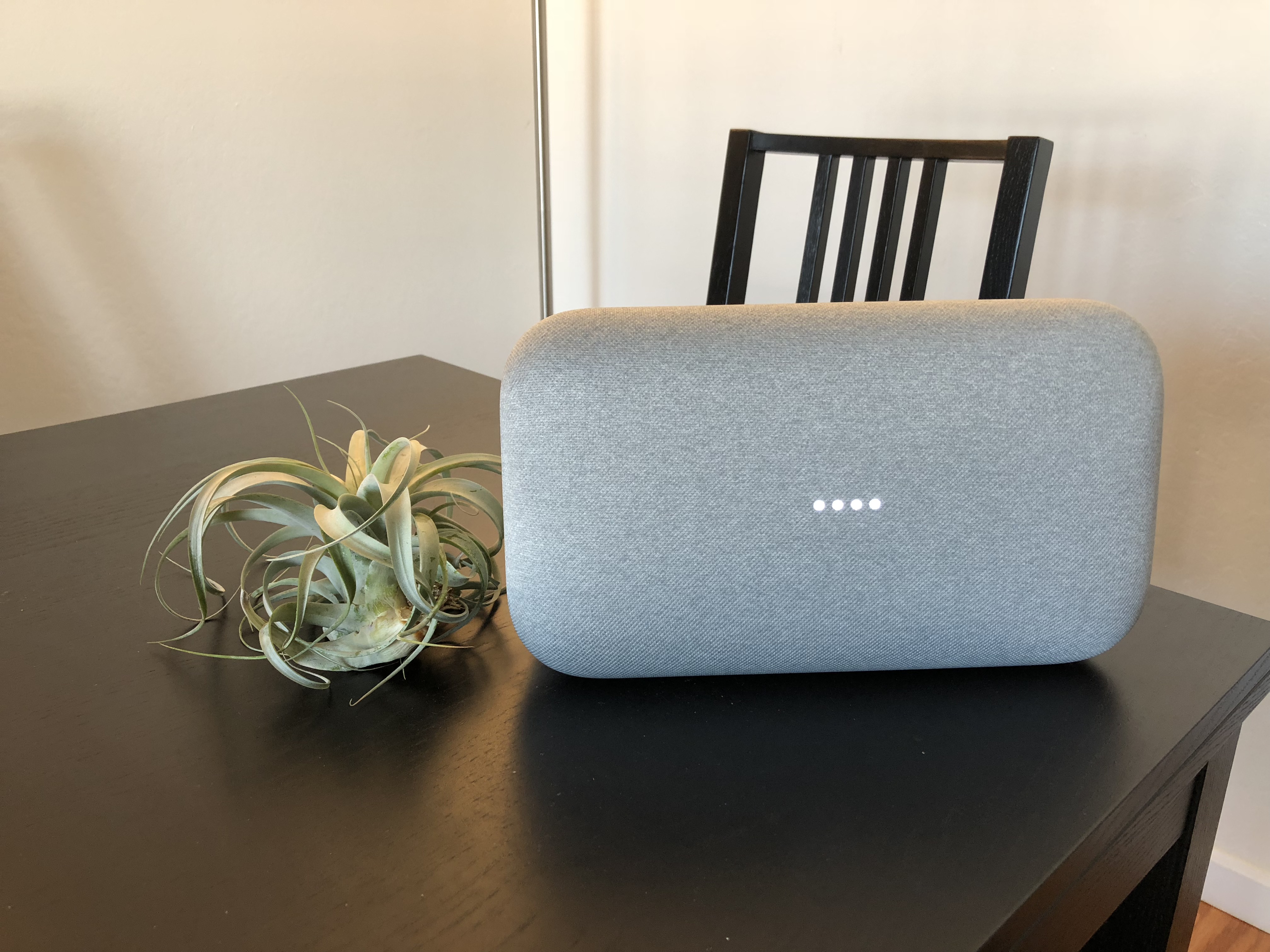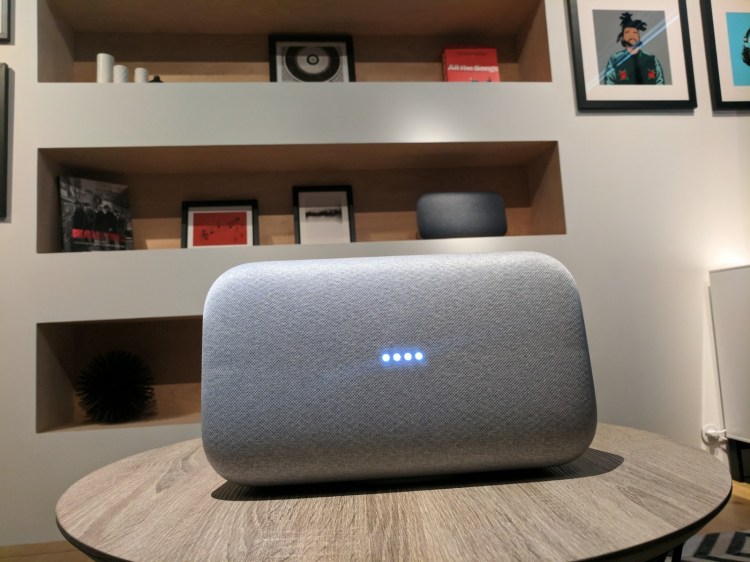testsetset
Until I tried the Google Home Max, I had never met a smart speaker that brought a smile to my face just by turning up its volume. I was awash in the thumping bass from Zedd’s “Clarity,” and it felt like my apartment’s living room was in the middle of a nightclub. The massive speaker array that makes up much of the Max kept up admirably, providing plenty of volume without distorting the music.
Other voice assistant-enabled speakers like the Amazon Echo and the original Google Home have speakers that could best be described as “fine.” They aren’t bad, for the most part, but the hardware that houses them tries to strike a balance between sound quality and size. While they work great as stand-ins for a boombox or small Bluetooth speaker, there’s no confusing them for a real sound system.
Google’s new Max, by contrast, stakes this claim. This is a device that feels like it’s aiming to replace small stereo systems for homeowners or people with larger apartments who have the space to actually enjoy the sound output. I live in a comfortably sized, but still small, San Francisco apartment, adjacent to several other units. I’d really prefer not to get evicted for nonconsensually sharing a dance party with my neighbors in the building.
What’s more, you have to dedicate space to the Max. It’s big and heavy for a smart speaker, which means it needs plenty of room on a shelf or table. It’s a far cry from a standard Google Home unit, which can fit comfortably in any available corner.
June 5th: The AI Audit in NYC
Join us next week in NYC to engage with top executive leaders, delving into strategies for auditing AI models to ensure fairness, optimal performance, and ethical compliance across diverse organizations. Secure your attendance for this exclusive invite-only event.

Above: The Google Home Max dominates my dining room table.
The Max’s shape also leads to some awkwardness with its controls: Manually turning the volume up or down require swiping along a touch-sensitive area atop the speaker that can be finicky at times. It’s possible to make those adjustments with voice commands as well, which may be the preferable option.
Still, the speaker is designed to make the most of the space that it’s given. Google built it to sense the acoustic characteristics of a room and adapt the output to make it sound the best it can. I wasn’t able to really evaluate how that works, but at least in theory, it’s supposed to provide benefits beyond a standard set of speakers.
One thing that sets the Max apart from many of its competitors is that it actually has a 3.5mm headphone jack port that can accept input from sources like a laptop or smartphone. (It also works as a standard Bluetooth speaker, too.) There’s a slight delay that crops up when first playing music through the speaker, which Google is aware of, according to Variety.
As far as software features go, the Max sports the same Google Assistant that users can find in other Home speakers. That means it provides the same benefits and drawbacks as those other speakers. The Assistant is quite good at getting information from the web, but suffers from problems like being unable to associate multiple calendar accounts with a single user. Its library of skills also pales in comparison to Alexa, but the same thing goes for other assistants.
The people who want to buy a Google Home Max ought to already be familiar with those trade-offs, since this isn’t a smart speaker I’d recommend as someone’s first. People should only plunk down $400 for one of these if they’re already invested in the Google Assistant ecosystem. Those folks who are unsure they want to bank on Google’s virtual assistant over Alexa, Cortana, or Siri should also steer clear. The Max is a major expense solely meant for enfranchised users, as far as I’m concerned.
The real comparison will come next year when other high-end speakers, like Apple’s upcoming HomePod, start hitting the market. Apple’s product, which was announced this year and has yet to ship, is supposed to provide similar high-quality sound and room-sensing speakers, with a different design and a connection to Siri.
That said, people who feel like they’re missing something like the Max in their home will enjoy it. It’s well designed and performs admirably at what it was built to do.


